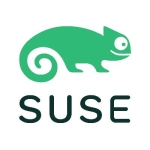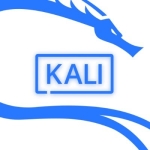I use the product for the integration capabilities it provides between my company's servers and the servers from other companies since we operate in the banking sector. I use Red Hat Enterprise Linux (RHEL) for clusters or load balancing. The tool provides an open-source platform to use any program. Many programs can be installed over Red Hat Enterprise Linux (RHEL).
I have seen that the upgrade from RHEL 7 to RHEL 8 can be a bit problematic since I have seen some issues during the upgrade of libraries, along with some conflicts with the other libraries in the tool. The aforementioned area can be considered for improvement in the product. Presently, I am not trying to upgrade from RHEL 8 to RHEL 9.
I have been using Red Hat Enterprise Linux (RHEL) for two years.
I have only used a little bit of technical support. I can say that over the span of years that I have used the tool, I have used the support offered by the product only twice. I don't have much experience when it comes to the support team. The support team did not help me solve my issues, and I had to search for a resolution by myself to solve my problems. People from India who are a part of the support team don't seem to have much experience in solving the product-related problems of the customers. I rate the technical support a six out of ten.
My company also uses MariaDB as a database, while at times, we use databases from Oracle or PostgreSQL over RHEL.
Sometimes, I use Ubuntu for some of the end-users in my company. Red Hat Enterprise Linux (RHEL) is useful for servers and not for end users. Red Hat Enterprise Linux (RHEL) is very compatible with servers.
The upgradation and migration parts attached to the solution can be described as a very straightforward and easy process. Sometimes, I migrate from the on-premises version to the cloud, which I find to be a very easy process. The servers are up and running very well, so I have no problems with the product.
I have experience with the on-premises version of the product.
The in-house team, consisting of four people, in my company takes care of the upgrade and migration parts attached to the solution.
My company has acquired five to ten licenses from Red Hat Enterprise Linux (RHEL).
My company uses the normal security features provided by the product. Presently, I am taking some courses related to security. My company uses solutions for security purposes, like CrowdStrike Falcon Protection.
I use the documentation provided by the product. I also joined the academy operated by Red Hat Enterprise Linux (RHEL) to learn about courses related to OpenShift and virtualization. The documentation is very easy to understand, and it is also good for learning purposes.
I joined the product's academy courses when Red Hat opened a new branch in Egypt. I have got certificates for learning about OpenShift and virtualization. I am planning to learn OpenStack.
For provisioning and patching, I use Foremen, which is an open-source product implemented by Red Hat Satellite. Foremen is very good and easy to use for patching and security updates.
Leapp or Red Hat Insights are not features that are enabled by default. I don't usually use the aforementioned in the product.
I use Red Hat Store for image-building purposes. Some other programs are installed after the images get installed with the help of the product.
Speaking about whether I use the web console or Convert2RHEL, I would say that I use the terminal console provided by the product, and it is also very easy for me to use.
The product has affected my company's security and uptime since Linux offers a firewall that provides complete security, which is very good.
I hope to use the product in a hybrid environment.
I need to prepare for security standard certifications from Red Hat Enterprise Linux (RHEL) since it can help me understand the features and the security that I need to get from the product for my company, making it something very important for my organization.
Red Hat Enterprise Linux (RHEL) is a big part of my company since we use a lot of servers with its open-source services. Red Hat Enterprise Linux (RHEL) serves as the base of the servers in our company.
Sometimes, I take care of the maintenance of the product, but it is not something that is required all the time. The maintenance process is pretty normal.
As a part of our company's migration or upgrade plans to stay updated, I will be upgrading from RHEL 8 to RHEL 9.
The product does what it is meant for, especially if MariaDB is installed over the tool.
I rate the solution a nine out of ten.

















